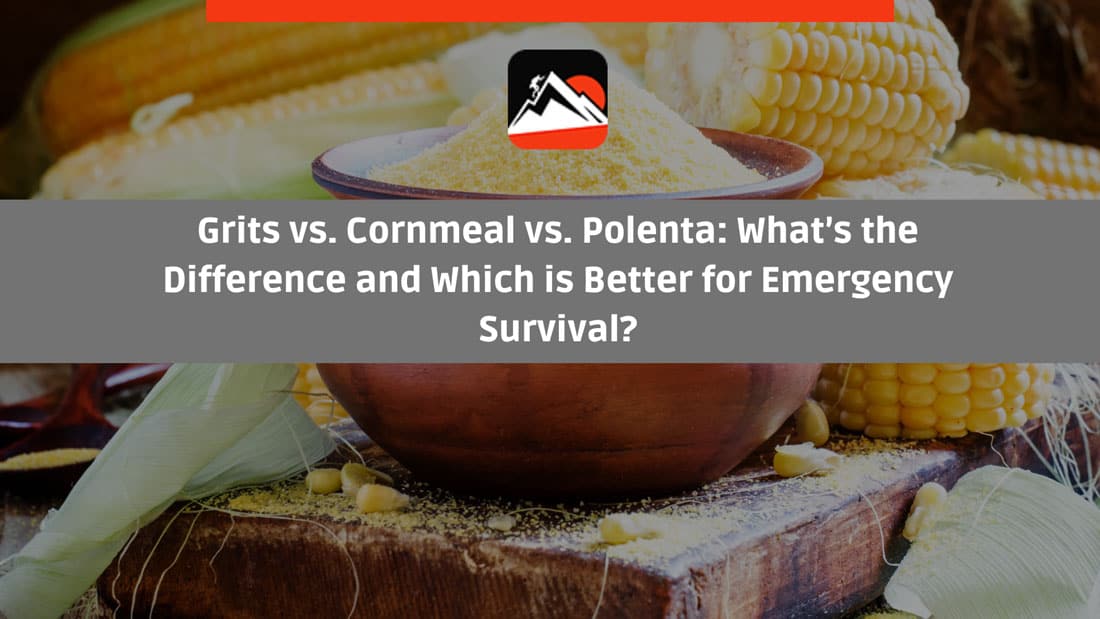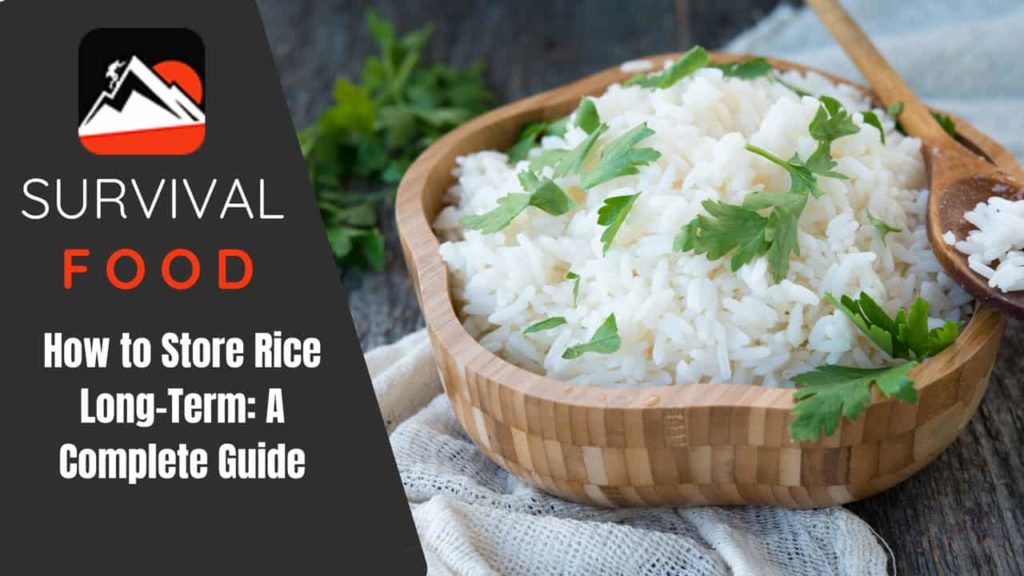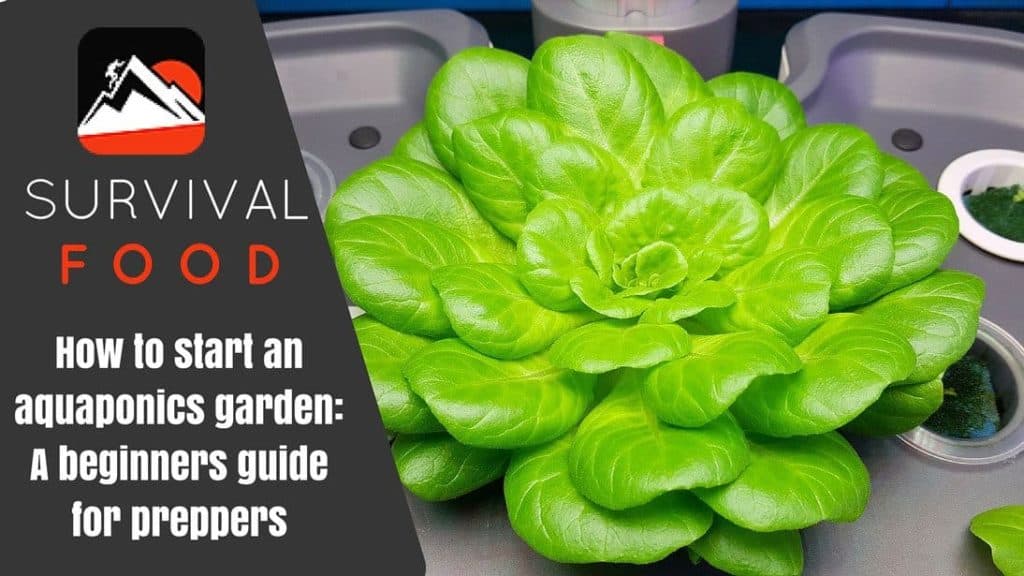Contents
When you’re talking about storing some serious staples long-term, grits are usually one of the main things one thinks of. Grits are one of the most nutritious foods you can add to your diet, and when you’re trying to stock up on food for emergencies, they’re also one of the best things you can keep on hand.
That’s because grits are one of the few food items that everyone loves across the board. There are lots of flavors to choose from, or you can just go plain. With all the options, you’re bound to find something that suits the taste buds of all of your family members! Because grits are a fine powder, you can keep a lot of them on hand, they make for one of the best emergency foods you can use.
However, you can’t just throw the grits in a bag or leave them in the original packaging and expect them to survive long term. That’s not going to work out. You need to make sure that you store them right, and if you do, they’ll last you years!
Wondering how you can get some serious survival prep done with grits? Keep on reading this post to find out!
How Long Can Stored Grits Last?
If you store grits right, they will easily last you at least 5 years past their expiration date. That means that if you buy a super fresh batch that has 2-3 years left on the best before date, you can keep them for 8 to 10 years easily!
It usually doesn’t come to that, though. You can just cycle through the oldest of your batch and keep replacing it with newer ones, and you’ll have an unlimited, lifelong supply of grits on your hands.
If you choose mylar bags to store your grits (which you should), they can easily last up to 30 years too!
We recommend checking out our guide about storing pasta long-term.
The Types of Grits to Avoid for Long-Term Storage
Even though grits are a great food to add to your survival pantry, not all grits today are made the same. Some particular kinds are actually not storage worthy at all! Below are the type of grits you need to make sure you’re always avoiding when trying to find appropriate grits to store long-term:
Instant Grits with Added Ingredients Like Cheese
Even though instant grits are the type that you should be stored, not all of them are always storage friendly. The top contender here are grits that have added ingredients like cheese in them!
That’s because cheese isn’t an ingredient you can store long-term. It goes bad and turns moldy within a couple of days. So even if it’s only finely ground up and used as light dust in the grits, it’s not going to stay good for the long term. If the cheese around the grits goes moldy, you won’t be able to use the entire package at all. So even if the flavor isn’t cheese, make sure to check the ingredient list to ensure that it’s not an added ingredient anyway.
Stone Ground Grits with The Whole Kernel Requires the Use of the Freezer
Stone ground grits that have whole kernels in the bag will need to be stored in a freezer. If they aren’t, they only tend to last a couple of hours after they’ve been opened. Most people setting up their own survival pantry don’t really use freezers. You should generally look for grits that are finely ground, without stone, so you can just store them in a dark, cool place without having to worry about them going bad at all.
Grits vs. Cornmeal vs. Polenta: What’s the Difference and Which is Better for Emergency Survival?

Grits have been around for decades, and because of that, there are tons of variations the product comes in. Some of them are survival friendly, but some might not be. But that’s not all. Since the main ingredient here is corn, people tend to get confused between all the other corn by-products when preparing for emergency survival.
Two of these are polenta and cornmeal. These are derived from corn too, but they’re not the same. Below are the differences between the three:
You might want to check out how to store powdered milk for emergencies.
Grits:
Grits are made solely with white, yellow, or blue soft dent corn. This is important to ensure that the final product is actually the silky texture that grits need to be. The corn is either ground to fine grainy dust, which is the instant kind, or it’s the whole corn, stone ground. The stone ground kind is usually whole corn kernels, which are as close to regular corn as possible. The instant kind takes mere minutes to prepare, and the whole kind takes close to an hour.
Cornmeal:
Cornmeal is more forgiving than grits. This kind can be made from any type of corn, the color and the type don’t really matter all that much. Whichever kind it may be, it’s ground using stone or steel rollers and ends up in a variety of different levels of grain. Some are thicker and bigger than others, but they all usually taste the same.
Also learn how to make your cornmeal last a long time using proper storage methods.
Polenta:
Polenta is the most basic kind of grit. It’s basically any hulled and crushed grain. After it’s ground up and processed, it ends up being a fine or medium-coarse texture. Whichever size it is, it’s usually consistent in that, which isn’t always the case with grits or cornmeal. Traditional Polenta is made from yellow corn and takes close to an hour to cook. However, you can find instant versions of this in the grocery store too.
How to Properly Store Grits for Emergency Survival
Now that you know all of the basic information about grits let’s go over everything you need to know to properly store them for emergency survival.
We also recommend reading how to store flour for emergency survival.
Before Storing: Put Them in The Freezer First for a Few Days to a Week
The prep here starts before you store them. Make sure they’re ready to be stored by putting them in the freezer for up to a week. This will ensure that they are free from moisture and ready to be stored away.
Mylar Bags with Oxygen Absorbers
When it comes to grits, the best way to store them is by putting them into Mylar bags. This can extend their shelf life to up to 30 years, if not even longer. For this, get lots of small to medium mylar bags, and start filling them up a little over 2/3rds of the way with grits. Remember to add a little note in there with the date you’re starting the process so you can keep track of which batch is which later on. Then, add in oxygen absorbers just in case there is any moisture still left in there, and seal the packet.
Food Grade Buckets
Once you have everything packed up, you get to store them away. For this, get a few food-grade buckets, and start filling them up with mylar bags. Once the bucket is near full, seal it up and move over to the next one.
Mason Jars
If you’re not looking to store a vast amount of grit, you can even use alternative methods to store it. Usually, people use mason jars to store the grits in an airtight container. This method works well but will only be helpful up to a year, and that too, with extreme care.
Vacuum Sealed
These days, one of the most popular methods of storing anything for the short or the long term is by vacuum sealing it. This might not be that easy to do, though, considering you’re working with very fine grit. So add a ziplock bag in there and leave a few inches of it unsealed, and then add a vacuum-sealable bag and seal it up! Your grits should be good for the next couple of years!
Freezer
If you do want to use a freezer, you can easily use it to store your grits. With a freezer, you have a lot more freedom because you can store cooked grit, as well as uncooked ones in there. Either way, they should be all good for at least 2-3 months this way.
You might also want to check out how to store pancake mix by clicking here.
How to Tell if Your Stored Grits are Spoiled?
Just because grits have an extremely long shelf life, doesn’t mean that there’s no way they can go bad at all. If you have plain grits, and they’ve suddenly got a bunch of black spots in there, it’s a sign that they’re starting to go bad.
If the package wasn’t sealed properly, and the tiniest bit of moisture or water was left inside, it can lead to mold growing within the package, rendering the grits inedible.
Finally, if the smell or taste has started to change, that too is a sign that the grits are spoiled.
It might be one of these things or all of the signs combined, but either means that your grits are spoiled and not fit to eat anymore.
Conclusion
With all of the information outlined in the article above, you will be able to store the right grits for your emergency survival pantry, and make sure that it lasts you a lifetime! Not only that, but if by any chance there is a problem with the grits, you can figure out that they’ve gone bad and discard them as needed! Keeping your pantry full of fresh grits, ready for use, at any point in time!





